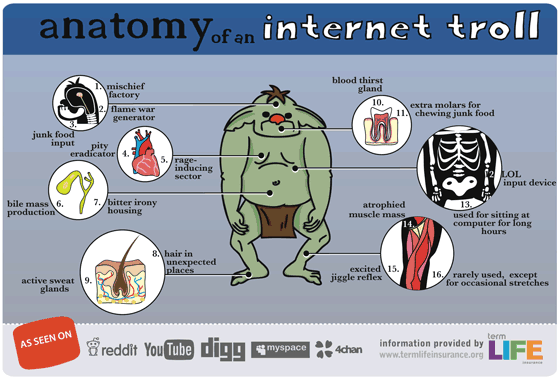Social media marketing gives new options for segmentation
 Since the 1950s, when the practice of market segmentation began, it has been the cornerstone of any marketing strategy.
Since the 1950s, when the practice of market segmentation began, it has been the cornerstone of any marketing strategy.
Accurately define your market segments and then the follow on activities of targeting and positioning are much more effective.
With the advent of social media marketing, many are asking whether social networks, and their ability to engage with individuals interactively and in real-time, made the practice of categorising people into groups redundant?
The answer has to be a resounding “No!”, but the way brands categorise consumers is changing.
Towards ‘socialgraphics’
Consumers are considerably more socially mobile and transient than when demographic segmentation was first adopted by marketers. Also, as a result of the web and social media, consumers are much more informed and influenced, think 'Tripadvisor'. They have access to greater choice and their smartphones are doing all of this for them, wherever they are.
Therefore, the basic approach of demographic segmentation, and pigeonholing people into presumed and fixed characteristics, is less relevant today. Grouping people into segments solely by geography, age, gender, profession and income and assuming they'll never change is not a great way to relate to your online audiences.
Therefore, consumer categorisation emphasis is moving towards the previously less popular technique of psychographic segmentation. Put simply, psychographics is about classifying people by their attitude and behaviour.
Using monitoring tools it’s possible to gain deep insight into users’ sentiments about a product or service, whether positive, negative or neutral. You can also track consumers’ interests, opinions and interests.
This form of social network psychographic segmentation is becoming known as socialgraphics.
Go where your segments meet
Using social networks, brands are able to locate their traditional market segments ‘hanging out’ online and engage with them. Self-segmenting groups form around areas of common interest, such as hobbies, sport, health, jobs etc. These are very fertile forums for brands to promote themselves to their exact target segments, conveniently congregating in one place.
These communities of interest are being intentionally fostered by social network platforms, who charge brands to participate in them; for example, Google+ Circles and LinkedIn Groups. But it's often forgotten that there are scores of other online communities brands can and should join in with in the right way.
But social spaces are places where users go to be informed, educated, supported and entertained - not to be sold to. When brands enter social networks they are participating in people’s social spaces and must earn the right to be there.
Therefore, the golden rule of social media marketing is do not overtly advertise in the traditional sense - all my research has revealed if organisations do this their fans and followers leave in droves.
‘Pull in’ your target market segments
Some socially savvy organisations are using a strategy I have termed segmentation pull. This approach involves setting up your own hosted online community and ‘pulling’ in your market segments.
For example;
- American Express - One of Viapoint’s team master-minded Open Forum, an online community for SME’s hosted by American Express. The community serves itself, as well as Amex offering support and guidance on every aspect of running a small business. Rather than advertising to the SME segment, Amex has ‘pulled’ or drawn this segment in.
- Britmums - Another good example of segmentation pull, Britmums host an online community of mothers, attracting a 3,000 strong blogger community. Each blogger averages 4,000 page views per month, creating an aggregated audience of 12 million. Mums are an ideal segment for many brands.
Nurture blogger influencers
About 10% of social network users generate 90% of the content. These users are referred to as ‘Creators’ or ‘E-Influencers’ - in fact, they are typically active bloggers. These highly influential people could be classified as a new market segment.
Influencers are often brand advocates. You should first identify and then very carefully nurture them to help them exert their influence. But, don’t ask them to transparently talk about your product or gratuitously ask them to give you something for nothing - you will alienate them. Giving them something new and really interesting to talk about or review is what motivates them. This technique is known as Social Influence Marketing.
 Your brand will also have negative influencers, known as ‘detractors’ or ‘trolls’. These influencers will vehemently give brands a bad press and their words are contagious like no others.
Your brand will also have negative influencers, known as ‘detractors’ or ‘trolls’. These influencers will vehemently give brands a bad press and their words are contagious like no others.
There are many examples of ‘trolls’ damaging a brand's reputation. So, treat these people with kid gloves; and make no corporate or official response to their posts.
Creators and detractors are arguably both new market segments, albeit ones that come and go.
But, then again, that’s how people behave and it’s this behaviour that marketers can now tap into.
Is ‘conversation marketing’ the panacea?
One-to-one marketing is only really practical if you have a relatively small number of high-value customers. Yes, marketers need to and can influence their few influencers, but it is not practical to try to have individual online conversations with your whole customer base (as is preached by some self-professed social media gurus).
However, conversation marketing is still possible if you go back to the principles of customer segmentation.
You can have group conversations with communities of interest once you have found where they hang out or pulled them into your own online community.
In conclusion
Segmentation strategies are here to stay and are, in fact, becoming increasingly important. So, ensure your social media marketing team is fully trained on this concept and work hand-in-hand with your customer insight or market segmentation teams.
With thanks to Permeative Blog and Vecindad Gráphica for use of the images.








